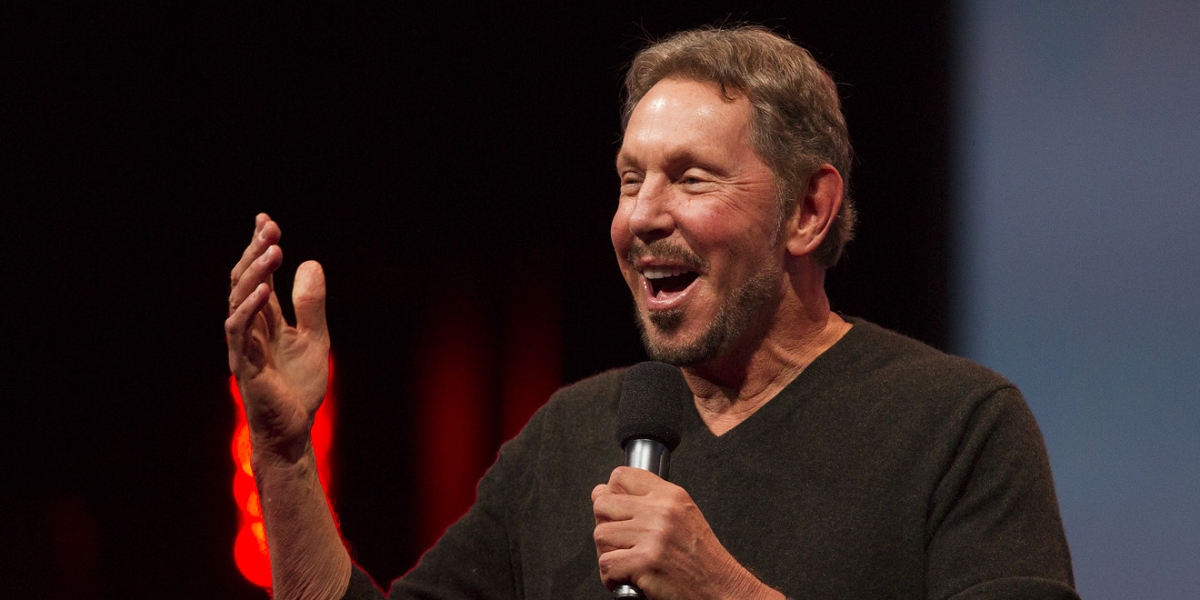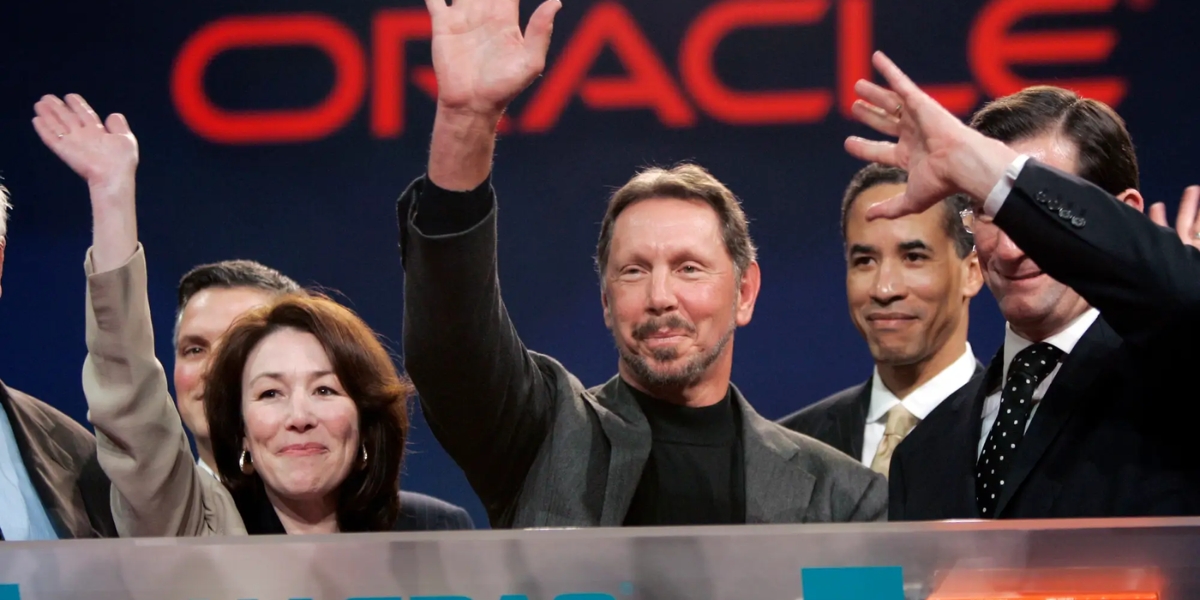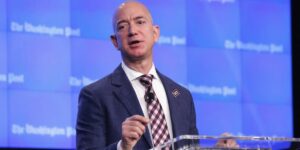Larry Ellison, co-founder of Oracle Company, stands as a towering figure in the tech industry with a net worth that reproduces his significant contributions to the sector. As of 2024, Ellison’s wealth is estimated to be over $120 billion, making him one of the richest persons in the world. This astounding figure is the result of decades of planned commercial moves innovative technological progressions and a keen eye for investments. His journey from a modest contextual to becoming a tech tycoon is a testament to his relentless drive and visionary leadership.
A substantial portion of Ellison’s net worth is tied to his shares in Oracle, the multinational computer technology corporation he founded in 1977. Under his leadership, Oracle grew into a global powerhouse, pioneering database management systems and enterprise software solutions that revolutionized the industry. Despite stepping down as CEO in 2014, Ellison remains actively involved in the company as chairman of the board and chief technology officer, roles that continue to influence Oracle’s strategic direction and, by extension, his financial standing. Additionally, Oracle’s consistent performance and stock value appreciation have significantly bolstered Ellison’s fortune over the years.
Beyond Oracle, Ellison has diversified his portfolio with strategic investments in various sectors. His significant stakes in companies like Tesla, where he serves on the board, and his ownership of the Hawaiian island of Lanai exemplify his expansive investment strategy. Moreover, his ventures into real estate, aviation, and sailing further amplify his wealth. Ellison’s ability to identify and capitalize on lucrative opportunities across different industries showcases not only his business acumen but also his resilience in maintaining and growing his net worth amidst changing market dynamics.
Early Life and Education
Larry Ellison’s early life and education played a crucial role in shaping the tech mogul he would become. Born on August 17, 1944, in New York City, Ellison faced significant challenges from the start. His unmarried teenage mother gave him up for adoption, and he was raised by his aunt and uncle in a lower-middle-class neighborhood on the South Side of Chicago. Despite a difficult childhood marked by health issues and family instability, Ellison exhibited an early aptitude for mathematics and science, subjects that would later underpin his successful career in technology.
Ellison attended the University of Illinois at Urbana-Champaign, where he initially thrived, even being named science student of the year. However, tragedy struck during his second year when his adoptive mother passed away, prompting him to leave school. He briefly returned to academia at the University of Chicago, where he was introduced to computer programming. This brief stint at Chicago, though not resulting in a degree, was pivotal as it sparked his interest in technology and laid the foundation for his future endeavors in the tech industry.
In the early 1970s, Ellison moved to California, the epicenter of technological innovation. He took various programming jobs, gradually gaining experience and honing his skills. His work at Apex, a technology company, on a project for the CIA code-named “Oracle,” inspired him to co-found Software Development Laboratories (SDL) in 1977. This company would later become Oracle Corporation, a giant in database management systems. Ellison’s unconventional educational path and the hardships he endured in his early years contributed significantly to his resilience, ambition, and innovative spirit, driving him to the pinnacle of success in the tech world.
Notable Accomplishments
Larry Ellison’s career is marked by numerous notable accomplishments that have solidified his status as a tech industry icon. One of his most significant achievements is the founding of Oracle Corporation in 1977. Under his leadership, Oracle revolutionized the database management industry by developing the first commercial relational database management system (RDBMS), which became the standard for enterprise data management. This innovation not only established Oracle as a key player in the tech sector but also transformed how businesses worldwide manage and utilize data.
Ellison’s vision extended beyond database technology. In the late 1990s and early 2000s, he steered Oracle towards cloud computing, recognizing its potential long before many of his contemporaries. His foresight and strategic investments in cloud infrastructure positioned Oracle as a major competitor in the cloud services market, competing with giants like Amazon Web Services and Microsoft Azure. This shift not only ensured Oracle’s relevance in a rapidly evolving industry but also significantly contributed to its sustained growth and profitability.
Beyond his contributions to Oracle, Ellison has made impactful investments and philanthropic endeavors. He acquired a substantial stake in Tesla, Inc., joining its board of directors in 2018, thus supporting the company’s innovative advancements in electric vehicles and sustainable energy. Additionally, Ellison is known for his philanthropic efforts, particularly in medical research. He founded the Lawrence Ellison Foundation, which funds biomedical research and health initiatives. His commitment to philanthropy, combined with his business acumen, underscores his multifaceted influence on both the tech industry and broader societal issues.
IPO and Oracle 7
Oracle went public on March 12, 1986, marking a significant turning point for the company and its founder. The IPO raised $31.5 million, providing essential capital that fueled Oracle’s rapid growth and expansion into new markets. This influx of funds enabled Oracle to invest heavily in research and development, hire top talent, and scale its operations globally. The IPO also solidified Ellison’s position as a key figure in the tech industry, turning his innovative vision into a publicly traded powerhouse. The move to go public was pivotal, as it provided the financial stability and market confidence needed for Oracle to pursue ambitious projects and strategic acquisitions.
One of the most notable products to emerge from Oracle’s post-IPO era was Oracle 7, released in 1992. Oracle 7 was a groundbreaking version of the company’s flagship relational database management system. It introduced several advanced features, such as stored procedures, triggers, and improved concurrency control, which significantly enhanced database performance, reliability, and scalability. These innovations addressed critical business needs, allowing companies to manage large volumes of data more efficiently and securely. Oracle 7’s success was a testament to Ellison’s commitment to continuous improvement and his ability to anticipate and meet the evolving demands of the market.
The release of Oracle 7 not only solidified Oracle’s dominance in the database management industry but also reinforced its reputation for technical excellence and innovation. This version helped Oracle maintain its competitive edge and laid the foundation for future advancements in database technology. Ellison’s ability to guide Oracle through its IPO and the development of Oracle 7 underscores his strategic acumen and visionary leadership, cementing his legacy as one of the most influential figures in the tech industry.
Read More:https://teerresults.uk/jeff-bezos/
Strategic Acquisitions
Larry Ellison’s strategic acquisitions have played a crucial role in Oracle Corporation’s growth and diversification. Under his leadership, Oracle executed a series of high-profile acquisitions that significantly expanded its product offerings, entered new markets, and strengthened its competitive position. These strategic moves not only bolstered Oracle’s capabilities but also demonstrated Ellison’s keen insight into the evolving needs of the tech industry.
One of the most significant acquisitions was PeopleSoft in 2005 for $10.3 billion. This acquisition marked Oracle’s aggressive entry into the enterprise software market, particularly in human resource management systems (HRMS) and customer relationship management (CRM). The acquisition was highly contentious, involving a protracted hostile takeover battle, but ultimately proved successful. Integrating PeopleSoft’s technologies and customer base into Oracle’s portfolio enabled the company to offer more comprehensive enterprise solutions, enhancing its market share and competitiveness.
Another landmark acquisition was the purchase of Sun Microsystems in 2010 for $7.4 billion. This acquisition was pivotal because it gave Oracle control over Java, one of the most widely used programming languages, and Solaris, a leading enterprise operating system. Additionally, acquiring Sun’s hardware business allowed Oracle to offer integrated hardware and software solutions, a strategic move that aimed to optimize performance and reliability for enterprise customers.
The Advent of the Internet
The advent of the internet in the 1990s revolutionized industries worldwide, and Larry Ellison was quick to recognize its transformative potential for Oracle Corporation. As the internet began to reshape the business landscape, Ellison’s strategic vision and adaptability ensured that Oracle remained at the forefront of technological innovation. His foresight in leveraging the internet’s capabilities not only enhanced Oracle’s product offerings but also positioned the company as a leader in the burgeoning digital economy.
In the mid-1990s, as the internet gained momentum, Ellison spearheaded Oracle’s shift towards internet-based technologies. He envisioned the Internet as a powerful platform for delivering enterprise software and saw the potential for businesses to operate more efficiently through web-based applications. This led to the development of Oracle’s network computing architecture, which enabled applications to run on a centralized server and be accessed via the Internet. This approach anticipated the modern cloud computing paradigm, underscoring Ellison’s forward-thinking leadership.
One of Oracle’s significant contributions during this period was the launch of Oracle 8i in 1999, a database designed specifically for Internet computing. Oracle 8i integrated internet technologies directly into the database, offering features such as native support for Java and improved performance for web-based applications. This innovation allowed businesses to build and deploy Internet applications more effectively, driving the adoption of web-based technologies across various industries. Oracle 8i’s success reinforced Oracle’s reputation as a pioneer in adapting to the internet’s rapid evolution.
Q&A
Who is Larry Ellison?
Larry Ellison is the co-founder, former CEO, and current chairman and CTO of Oracle Corporation.
What is Larry Ellison’s net worth in 2024?
As of 2024, Larry Ellison’s net worth is estimated to be over $120 billion.
What major company did Larry Ellison help create?
Larry Ellison co-founded Oracle Corporation, a leading global software and technology company.
What notable acquisition did Larry Ellison make in 2010?
In 2010, Larry Ellison led Oracle’s acquisition of Sun Microsystems for $7.4 billion.
How did Larry Ellison respond to the advent of the internet?
Ellison embraced internet-based technologies, developing Oracle’s network computing architecture and launching Oracle 8i for internet computing.
Conclusion
Larry Ellison’s impact on the tech industry is both profound and enduring. As the co-founder of Oracle Corporation, he revolutionized database management systems and steered the company through significant technological shifts, including the rise of the internet and cloud computing. His visionary leadership and strategic acquisitions, such as PeopleSoft and Sun Microsystems, have ensured Oracle’s sustained growth and relevance in an ever-evolving market. Ellison’s ability to anticipate industry trends and relentless drive for innovation has solidified his legacy as one of the most influential technological figures.
Beyond his business achievements, Ellison’s journey from a challenging early life to becoming one of the world’s wealthiest individuals is a testament to his resilience and ambition. His investments in diverse sectors, including real estate and sustainable energy, and his philanthropic efforts in medical research further highlight his multifaceted influence. As a tech tycoon and visionary leader, Larry Ellison’s contributions extend beyond Oracle, shaping the broader landscape of technology and business. His story continues to inspire entrepreneurs and innovators around the globe.
















